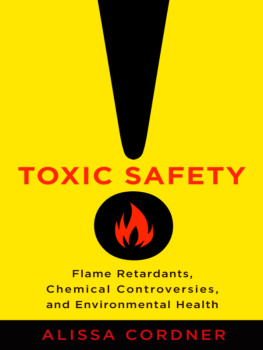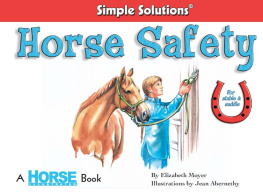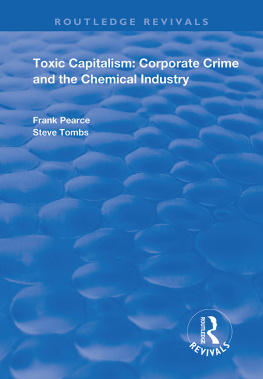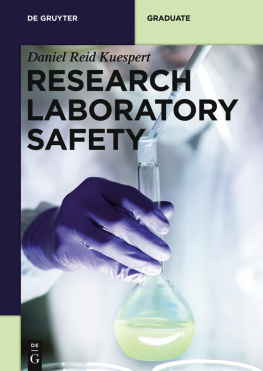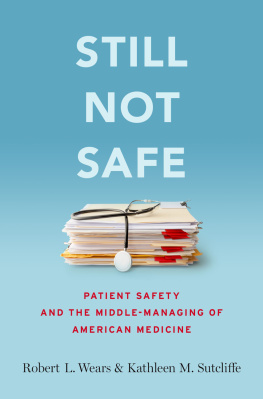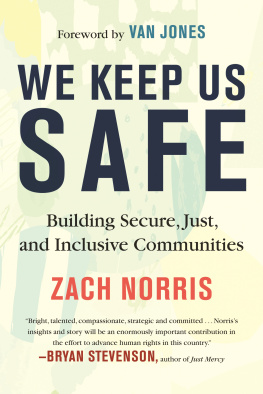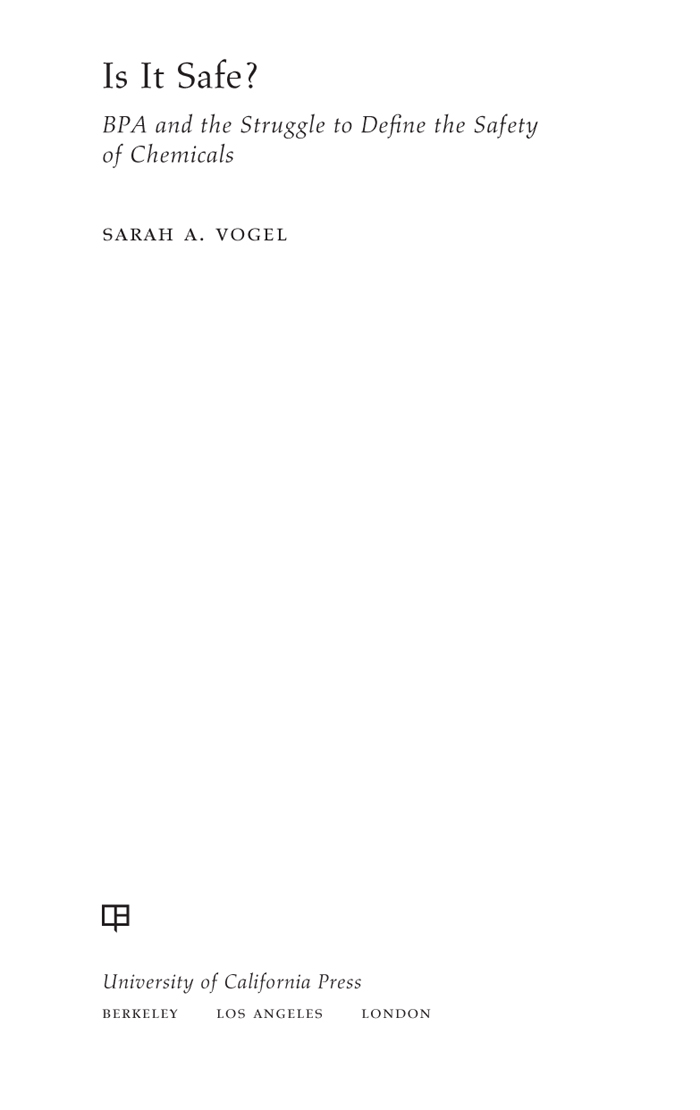Is It Safe?
Is It Safe?
BPA and the Struggle to Define the Safety of Chemicals
SARAH A. VOGEL

University of California Press, one of the most distinguished university presses in the United States, enriches lives around the world by advancing scholarship in the humanities, social sciences, and natural sciences. Its activities are supported by the UC Press Foundation and by philanthropic contributions from individuals and institutions. For more information, visit www.ucpress.edu.
University of California Press
Berkeley and Los Angeles, California
University of California Press, Ltd.
London, England
2013 by The Regents of the University of California
Library of Congress Cataloging-in-Publication Data
Vogel, Sarah A. (Sarah Ann), 1974
Is it safe? : BPA and the struggle to define the safety of chemicals / Sarah A. Vogel.
p. cm.
Includes bibliographical references and index.
ISBN 978-0-520-27357-3 (cloth : alk. paper)ISBN 978-0-520-27358-0 (pbk. : alk. paper)
I. Title.
[DNLM: 1. Phenolstoxicity. 2. Economics. 3. Endocrine Disruptorstoxicity. 4. Environmental Exposurelegislation & jurisprudence. 5. Environmental Exposurestandards. 6. Politics. QV 627]
615.95131dc23 2012026476
Manufactured in the United States of America
20 19 18 17 16 15 14 13
10 9 8 7 6 5 4 3 2 1
In keeping with a commitment to support environmentally responsible and sustainable printing practices, UC Press has printed this book on 50-pound Enterprise, a 30% post-consumer-waste, recycled, deinked fiber that is processed chlorine-free. It is acid-free and meets all ANSI/NISO (z 39.48) requirements.
In memory of my mother, Judy Vogel
Contents
Illustrations
Abbreviations
ACC | American Chemistry Council |
AIHC | American Industrial Health Council |
APA | Administrative Procedures Act (1946) |
APC | American Plastics Council |
BPA | bisphenol A |
CDC | Centers for Disease Control and Prevention |
CERHR | Center for the Evaluation of Risks to Human Reproduction |
DES | diethylstilbestrol |
ECHA | European Chemicals Agency |
EDSTAC | Endocrine Disruptor Screening and Testing Advisory Committee |
EFSA | European Food Safety Authority |
EPA | U.S. Environmental Protection Agency |
FDA | U.S. Food and Drug Administration |
FFDCA | Federal Food, Drug and Cosmetic Act (1938, 1958) |
FQPA | Food Quality Protection Act (1996) |
GAO | General Accounting Office (as of 2004, Government Accountability Office) |
GLP | good laboratory practices |
GRAS | generally recognized as safe |
HEW | Department of Health, Education and Welfare |
IARC | International Agency for Research on Cancer |
IBT | Industrial Bio-Test |
IJC | U.S.-Canadian International Joint Commission |
IPCC | Intergovernmental Panel on Climate Change |
IRLG | Interagency Regulatory Liaison Group |
LOAEL | lowest observed adverse effect level |
MCA | Manufacturing Chemists Association |
NAS | National Academy of Sciences |
NCI | National Cancer Institute |
NIEHS | National Institute of Environmental Health Sciences |
NIH | National Institutes of Health |
NIOSH | National Institute for Occupational Safety and Health |
NOAEL | no observable adverse effect level |
NRC | National Research Council |
NRDC | Natural Resources Defense Council |
NTP | National Toxicology Program |
OIRA | Office of Information and Regulatory Affairs |
OMB | Office of Management and Budget |
OSHA | Occupational Safety and Health Administration |
OSHAct | Occupational Safety and Health Act |
OTA | Congressional Office of Technology Assessment |
PBDEs | polybrominated diphenyl ethers |
PCBs | polychlorinated biphenyls |
PFOA | perfluorooctanoic acid |
PVC | polyvinyl chloride |
PVP | polyvinylpyrrolidone |
REACH | Registration, Evaluation, Authorisation, and Restriction of Chemicals |
SDWA | Safe Drinking Water Act (1974, 1996) |
SOM | Sensitivity of Method |
SPI | Society of the Plastics Industry |
TASSC | The Advancement of Sound Science Coalition |
TSCA | Toxic Substances Control Act (1976) |
WHO | World Health Organization |
WWF | World Wildlife Fund, U.S. |
Measurements
mg/kg | milligrams per kilogram or parts per million (ppm) |
g/kg | micrograms per kilogram (parts per billion; ppb) = 0.001 mg/kg |
ng/kg | nanograms per kilogram (parts per trillion; ppt) = 0.000001 mg/kg |
Preface
This book asks the question: What makes a chemical safe?
The rapid proliferation of petrochemical compoundsused to make pesticides, plastics, drugs, and many other products of modern lifeover the past sixty years has transformed our global economy and ecology, as well as human understanding of our brave new world. From the mid twentieth century onward, we marched forward in the petrochemical revolution with the assurance that the ease, health, and convenience provided by new pesticides and plastics would outweigh their risks. We were armed with comforting colloquialisms, such as All things in moderation. A bit of chemical exposure could be tolerated, given the enormous benefits petrochemicals afforded society. And indeed, as U.S. chemical production grew, so too did the gross domestic product.
The neat simplicity and seemingly commonsense notion of this logic, however, is being contested today by emerging understandings about the risks of industrial chemicals found within the human body. Recognition that exposure is so ubiquitous that industrial compounds can now be found in umbilical cord blood and amniotic fluid alters our perspective on what defines chemical moderation in the twenty-first century.



